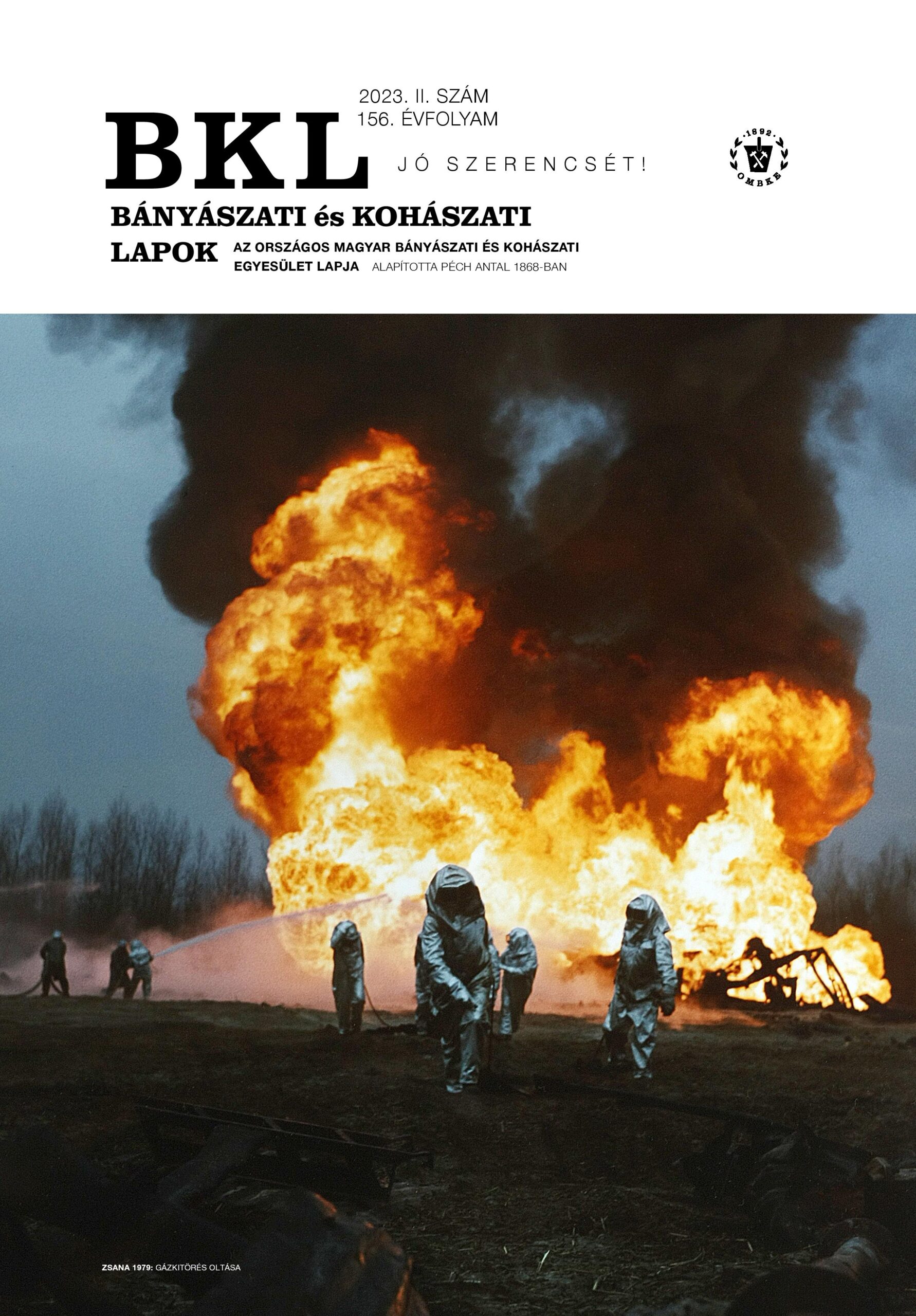The 51st blowout, the history, events, lessons and some theoretical issues
Abstract
A total of 81 oil, natural gas, carbon dioxide, thermal water and steam eruptions have occurred in the historical territory of Hungary. The first one took place at Kissármás from 22 April 1909 to 30 July 1911, lasting for more than 27 months and releasing 864 000 m3 of pure methane gas per day. The last one was in Szada from 20 June to 13 July 2008, which caused a damage of more than 100 million forints. Zsana-North–2 well was the 51st to blow out, which lasted from 24 January to 15 February 1979.
Hydrocarbon exploration activities have been carried out in the Danube–Tisza area since 1924, with some interruptions. The Hungarian Oil Syndicate, Ltd. drilled Baja–1 exploration well after two unsuccessful wells in Transdanubia (Budafapuszta and Kurd). However, the Great Depression, which soon followed, put all explorations on hold for a time. Of the three main periods of hydrocarbon explorations in the Danube–Tisza area, the first one did not discover any hydrocarbon deposits, the second one discovered small deposits, whereas the third one discovered hydrocarbon deposits of national significance. Geophysical (gravity and seismic) measurements carried out in the second half of the 1970s during hydrocarbon exploration work in the Danube–Tisza area of Bács-Kiskun County revealed a double seismic outcrop north of the village of Zsana. One of the seismic protrusions was targeted by an exploration well, Zsana-North–1, located south-east of Zsana-North–2 well. The drilling of the borehole was undisturbed until 1825 m, when a gas eruption occurred during the construction of the core drilling and the erupted gas ignited. To extinguish the fi re and clean up the outbreak, the assistance of the entire OKGT outbreak response rescue team, partner companies, administrative authorities, national authorities and institutions and that of the armed forces was required. The successful removal of the damaged and burnt-out breakout preventers was carried out by Soviet and Hungarian artillery units with self-propelled artillery shells and tank shells. In addition to conventional fi re extinguishers, two turbo-reactive extinguishers (MIG–15 VK1-RD–4 jet engine mounted on a ZIL–131 chassis) were used to extinguish the fi re. After the fi re had been extinguished and the outbreak eliminated, the well was trained as a gas producer after the completion of the post-fi re works. It produced gas until 1992, when it was converted into an underground gas storage well and continues to function as such today.
The general experience with the clean-up of the blow-out is as follows:
- The potential risk of blowouts exists from the start of deep drilling exploration until the completion of the final well clean-up.
- When the risk is present, the occurrence of blowouts is not necessary.
- It is important to prepare for the prevention and mitigation of blowouts.
- A well-trained eruption response organisation is necessary, both in theory and practice.
- It has been shown that the gas explosion could have been prevented or avoided with more careful pre-planning and preparation, by regular breakout prevention training for the drilling rig personnel, regular blowout prevention checks of the drilling rig, better instrumentation of the drilling rig and better situational awareness and more routine behaviour of the drilling personnel on duty at the time of the hazard.
This paper summarises the history, events, lessons learned, some theoretical issues and societal reactions to the gas explosion in Zsana.
References
Erdélyi Á. (1988): A Duna-Tisza közi szénhidrogén-kutatások története. Földtani Kutatás, XXXI/1, Budapest.
Kőrössy L. (1992): A Duna-Tisza-köze kőolaj- és földgázkutatásának földtani eredményei. Általános Földtani Szemle, 26, 3-126., Budapest.
Babinszki Edit és mtsai (2018): Szénhidrogének Magyarországon. Eredmények, lehetőségek. Magyar Energetikai és Közmű-szabályozási Hivatal, Budapest.
Magyar Földgáztároló Zrt. (MFGT) (2023): Gáztárolók. Budapest.
Buda E. (2001): A magyarországi kőolaj-, földgáz-, szén-dioxid-, hévíz- és gőzkitörések esetleírásai (1909-2000). Nagykanizsa.
Csákó D. (1989. május): Gázkitörések áramlástani és termodinamaikai vizsgálata. 1. Modellezés, megfontolások. BKL Kőolaj és Földgáz 22, 122/5.
Csákó D. (1989. június): Gázkitörések áramlástani és termodinamaikai vizsgálata. 2. Számítási módszer. BKL Kőolaj és Földgáz 22, 122/6.
Buda E., Götz T., id. Ősz Á. (2004. szeptember-október): A magyarországi kőolaj-, földgáz-, széndioxid-, gőz- és forróvíz-kitörések elhárításának története 1909-2000 között. BKL Kőolaj és Földgáz 37. 137/9-10.
id. Ősz Á., Galicz G. (2009): Száz év kitörései. Kitörésvédelmi és elhárítási konferencia, Szolnok, 2009. szeptember 8-9.



